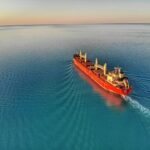Stringent Scrubber Wash Water Monitoring to Protect Shipowners in the Long Run

Installing a scrubber represents a significant investment for a shipowner. With the financial cost of the system and its installation, coupled with the lay-up time – no shipowner can take the decision lightly; with the reduced spread between high-sulfur fuel oil (HSFO) and very-low sulfur fuel oil (VLSFO) increasing pay back times, scrubbers need to make sense as an even longer-term investment today.
The economic case for scrubbers remains strong, though. If HSFO remains cheaper than VLSFO, scrubbers will represent a return on investment for shipowners and the current gap is highly likely to increase rather than decrease any further.
Then there is the issue of fuel availability, which is another key reason many scrubber-equipped vessels demand charter rate premiums. Due to the nature of HSFO as a residual (bi-product derived) fuel, it is very possible that we will see supply-side incentives continuing, most probably in the form of widespread availability and relatively attractive discounts.
However, when it comes to compliance, and specifically, the kinds of testing that needs to be conducted on scrubber wash water; shipowners who have invested in scrubbers do face a hidden risk. How will they be able to prove their scrubbers are working, and get an advance warning if they aren’t? The IMO is yet to align all signatory states along one policy approach to this, and there are other region-specific regulatory issues.
The message: Those who plan on investing in scrubbers are still in the running to make big gains as the global economy recovers. But, in order not to fall foul in the current confusion, a clear understanding of wash water monitoring is crucial in order to ensure that these investments are safeguarded from the emerging regulatory framework.
One of the key areas of regulatory risk is the current approach to Polycyclic Aromatic Hydrocarbon (PAH) monitoring. PAHs are types of pollutant compound that are potentially harmful to human health. Regulators are yet to provide detailed guidance on the measurement and methodology for PAH testing. So, while the environmental compliance of wash water relies on thorough and accurate monitoring, this is an important gap. The lack of official standards for monitoring PAH levels means that the industry is not able to guarantee that scrubbers installed today will continue to be compliant.
PAH is arguably the most crucial parameter for wash water monitoring because it represents the most environmentally harmful element of wash water discharge and therefore controlling it accurately, while prioritising positive environmental outcomes, is critical. Shipowners considering scrubber purchases need accurate data to ensure that they are making an informed decision on the effectiveness and longevity of their chosen equipment.
Given the IMO’s current mandate to harmonise testing approaches, the only way to ensure confidence in the future currency of a scrubber installation is to use an accurate, maximum range wash water monitoring solution as an integrated part of the scrubber system design.
Owners looking for monitoring systems should ensure that the system they install is able to perform the most stringent regulatory analysis of the parameters required by the IMO, including PAH, pH, turbidity (to ISO 7027: 1999) and temperature. Ensuring that robust and accurate measurements are made provides confidence that, whatever level the IMO chose, a system will remain compliant.
Certified by DNV-GL and ClassNK and trusted by shipowners, Chelsea’s Sea Sentry provides users with a full-range PAH measurement using a proven and highly accurate sensing technique. Sea Sentry uses automatic PAH measurement adjustments within the software for pH, temperature and absorbance, which enables the measurement of twice the required PAH range (0-4500 micrograms/litre). As a key measurement parameter, it is essential that shipowners can accurately detect PAH contaminants in wash water to prevent the discharge of harmful particles including unburned fuel oil into the sea. With this important piece of regulation still undecided, shipowners need assurance that the PAH measurement methodology employed by the wash water monitor they have installed is able to conduct a rigorous and accurate analysis of wash water.
Ensuring continued compliance also requires a monitoring system that can be trusted and operated easily by crew. Chelsea Technologies’ Sea Sentry is designed with this in mind; the highly adaptable system embeds unique technologies to ensure its adaptability, reliability, and ease of management at sea. The monitoring system contains self-maintaining features, including an integrated air purge antifouling system, automatic monitoring of the optical sensor window, automatic PAH measurement adjustments for turbidity, UV absorbance and temperature, and an integrated pump, de-bubbler, pressure relief system and flow metering.
Accurate and easy to operate wash water monitoring provides an additional level of confidence to shipowners who have installed or are making the decision to invest in scrubbers. By allowing operators and manufacturers to understand the reliability, accuracy and longevity of their respective systems, as well as shielding from future regulatory changes, they provide piece of mind alongside vital data.















